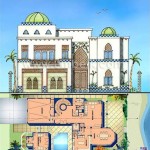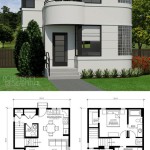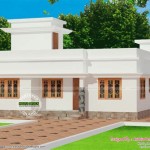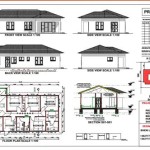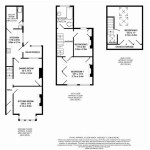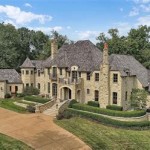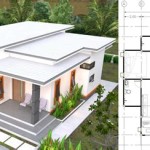Charleston Style Row House Plans: A Guide to Historic Charm and Modern Living
Charleston, South Carolina, is renowned for its distinctive architecture, characterized by colorful historic homes and narrow, walkable streets. Row houses, a staple of Charleston's urban landscape, offer a unique blend of historical charm and modern convenience. Understanding the characteristics of Charleston row house plans is crucial for anyone seeking to build, renovate, or simply appreciate this architectural style.
Key Features of Charleston Style Row House Plans
Charleston single houses are typically characterized by two- to three-story structures with long, narrow floor plans that stretch from street to back alley, creating a unique urban fabric. These features often include:
*Narrow Facades:
The narrow facades, often just two or three bays wide, contribute to the streetscape's intimate scale. *Side Piazzas:
A defining characteristic is the side piazza, or porch which provide shade and ventilation in the Charleston climate. These piazzas are often located on the south or west side of the house to maximize shade. *Hidden Gardens:
Beyond the house itself, Charleston row houses often feature private gardens or courtyards, tucked away behind the building and providing a tranquil outdoor space. *Two-Over-Two or Three-Over-Three Layouts:
These layouts refer to the window arrangement on the facade. Two-over-two means two windows on the first floor and two on the second, while three-over-three indicates three windows on each floor. This symmetrical arrangement is a common feature. *Simple Gable Roofs:
While some variations exist, simple gable roofs are a predominant characteristic, contributing to the clean lines and uncluttered appearance of the facade.Adapting Charleston Style for Modern Living
While preserving the historical integrity of Charleston row houses is essential, modern floor plans often require adaptations to meet contemporary needs. These adaptations typically involve:
*Open Floor Plans:
Traditional Charleston row houses often feature compartmentalized rooms. Modern renovations frequently incorporate open floor plans to create a more spacious and flowing living environment. *Updated Kitchens and Bathrooms:
These areas are prime candidates for modernization, incorporating contemporary appliances, fixtures, and finishes while respecting the overall aesthetic of the house. *Energy Efficiency:
Incorporating energy-efficient windows, insulation, and HVAC systems helps reduce energy consumption while preserving the historic character of the house. *Multi-Use Spaces:
With urban living often demanding flexible spaces, modern Charleston row house plans may incorporate multi-use areas that can serve as home offices, guest rooms, or entertainment areas.Considerations for Building a Charleston Style Row House
Building a new row house in the Charleston style requires careful planning and consideration of local regulations. Key factors to address include:
*Historic District Guidelines:
Many areas of Charleston are designated historic districts, with strict regulations governing new construction and renovations. These guidelines often dictate specific materials, colors, and building heights to ensure consistency with the existing architecture. *Lot Size and Setbacks:
Charleston's narrow lots and established setbacks require careful planning to maximize space and adhere to local ordinances. *Parking:
Off-street parking can be a challenge in densely populated urban areas like Charleston. Plans may need to incorporate garages or dedicated parking spaces to meet local requirements. *Flood Zone Considerations:
Charleston's location near the coast necessitates careful consideration of flood zones and potential flood mitigation measures.Variations in Charleston Row House Styles
While certain common characteristics define Charleston single houses, variations exist that reflect different periods and influences. Some notable variations include:
*Single Houses:
These houses, also known as Charleston single houses, are technically not row houses, but they share architectural similarities. They are free-standing structures with side yards and piazzas. *Double Houses:
These feature two units sharing a common wall, with each unit having its own entrance and side piazza. *Early Charleston Single Houses:
Characterized by simpler detailing and smaller scale than later examples.Preservation and Restoration of Existing Row Houses
Preserving existing Charleston row houses is paramount to maintaining the city's architectural heritage. Restoration projects require specialized expertise to ensure the historic integrity of the building is respected while meeting modern needs.
*Historical Accuracy:
Using appropriate materials and techniques is crucial in preserving the historical authenticity of the structure. This often involves consulting historical records and working with skilled craftsmen experienced in traditional building methods. *Structural Integrity:
Addressing any structural issues, such as foundation problems or deteriorated wood, is essential for the long-term viability of the house. *Modern Upgrades:
Balancing historical preservation with modern updates requires careful planning. Integrating contemporary amenities while respecting the original character of the house is a delicate but achievable goal.The Appeal of Charleston Row House Living
Charleston row houses offer a unique lifestyle that blends historical charm with urban convenience. The walkable neighborhoods, vibrant community, and proximity to cultural attractions contribute to the allure of this architectural style.
*Walkability:
The compact urban design of Charleston promotes walkability, allowing residents to easily access shops, restaurants, and cultural destinations. *Community:
The close proximity of row houses fosters a sense of community among residents. *Low-Maintenance Living:
With smaller yards and shared walls, row houses can offer a lower-maintenance lifestyle compared to detached single-family homes.Finding Charleston Style Row House Plans
Accessing Charleston style row house plans requires utilizing various resources. These resources allow individuals seeking inspiration or concrete plans to realize their Charleston-inspired architectural vision.
*Architectural Firms Specializing in Historic Styles:
Many architectural firms specialize in historic styles, offering custom design services or pre-designed plans that capture the essence of Charleston architecture. *Online Plan Resources:
Numerous online platforms offer a wide selection of house plans, including Charleston style designs. These platforms allow for customization and provide access to a diverse range of styles and sizes. *Historical Societies and Archives:
Local historical societies and archives often hold collections of original architectural drawings and blueprints, offering valuable insights into historical construction methods and design details.
Home Plan Charleston Place Sater Design Collection

Southern Home Plans With A Side Entry Wrap Around Porches

Home Plan Charleston Place Sater Design Collection

Home Plan Charleston Place Sater Design Collection

Floorplans Design House Plans Brick Detail Exterior

Southern Home Plans With A Side Entry Wrap Around Porches

Charleston Row House With Double Porches 5489lk Architectural Designs Plans

Charleston Style Homes House Plans Empire Properties

Charleston Row House With Double Porches 5489lk Architectural Designs Plans

Side Entry Charleston Style Southern Home

